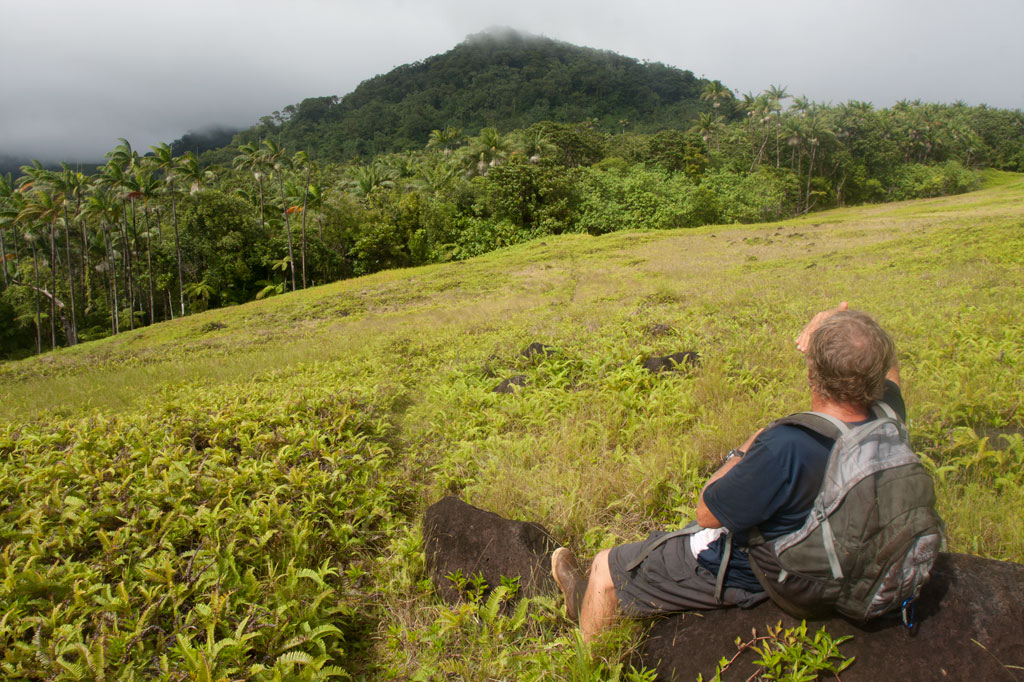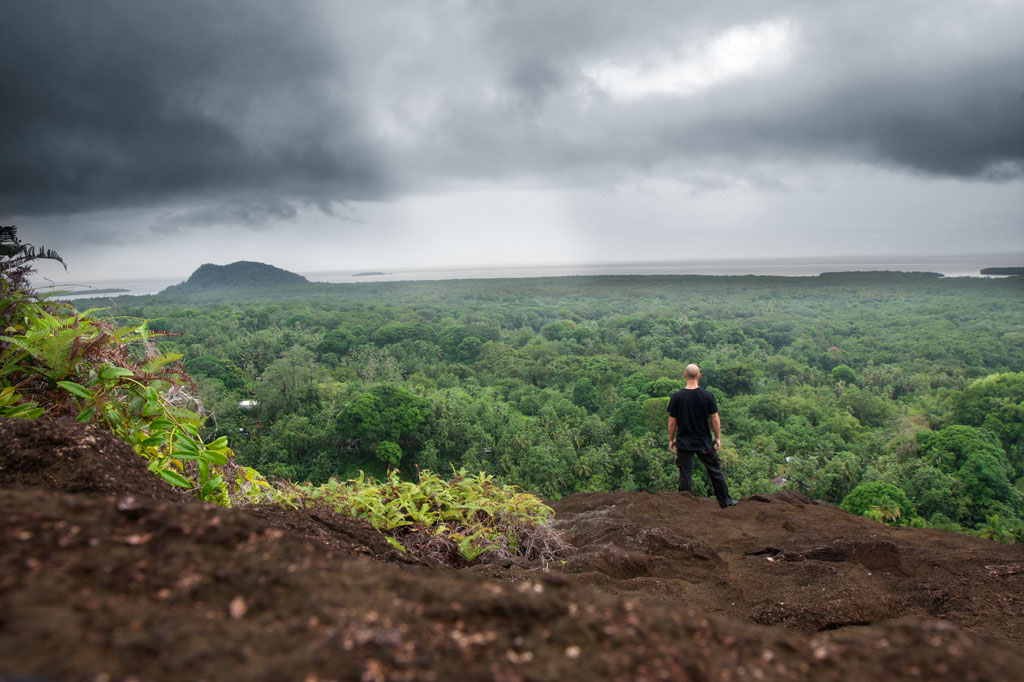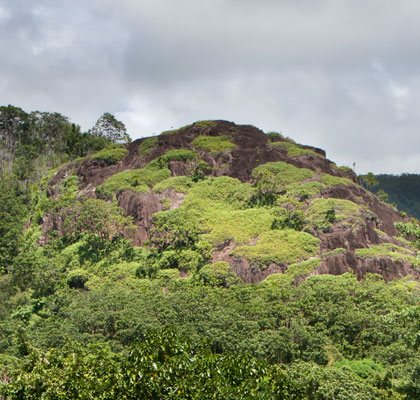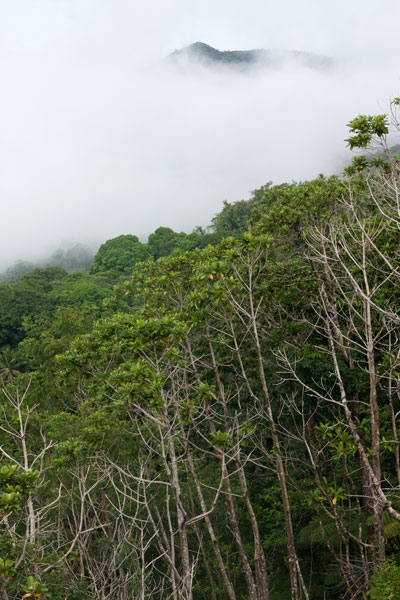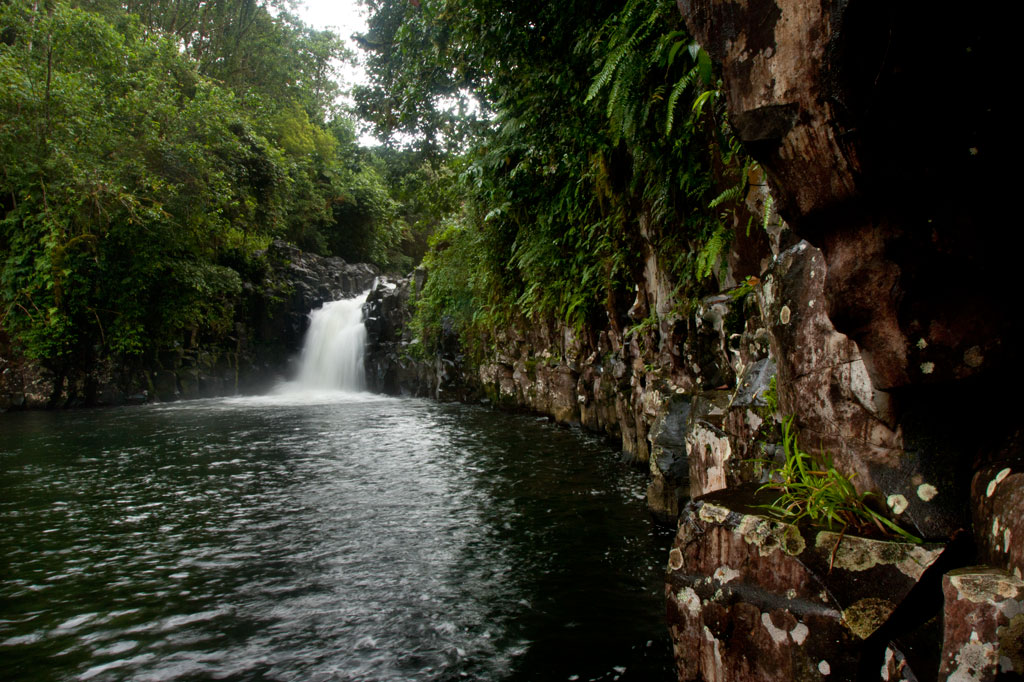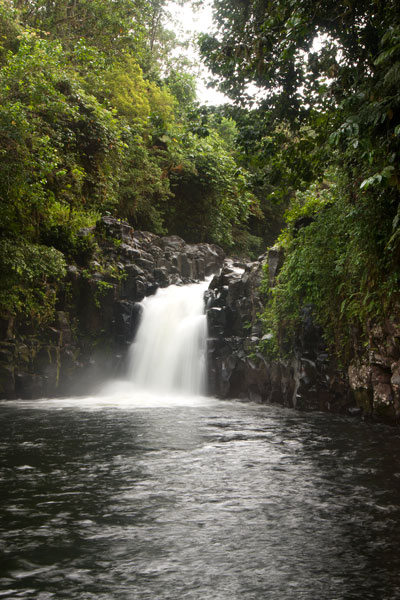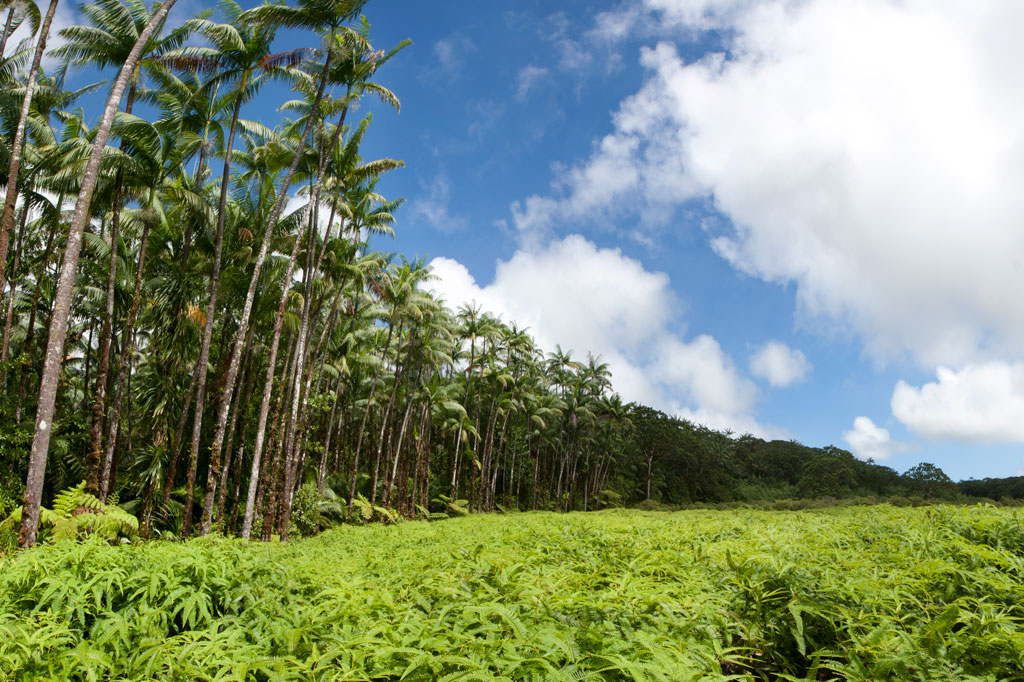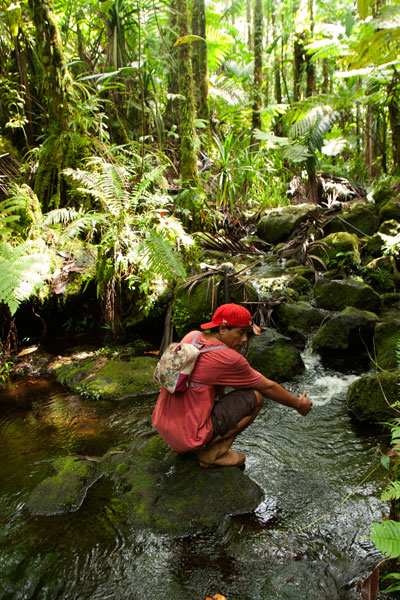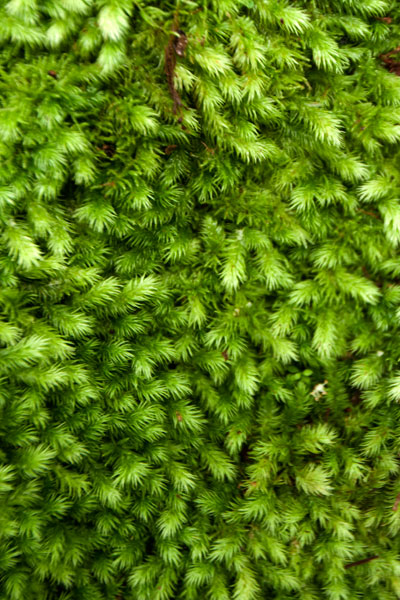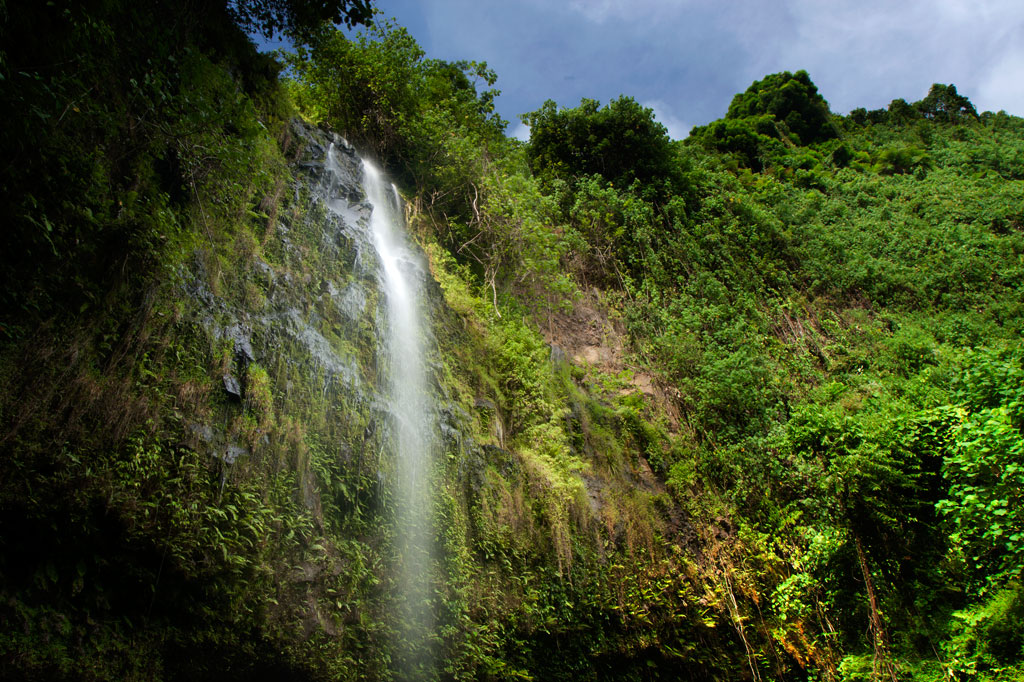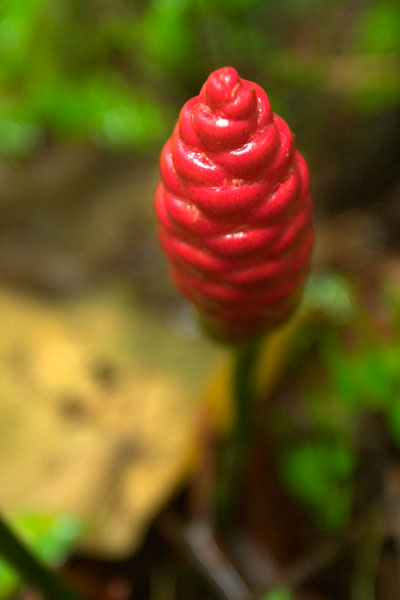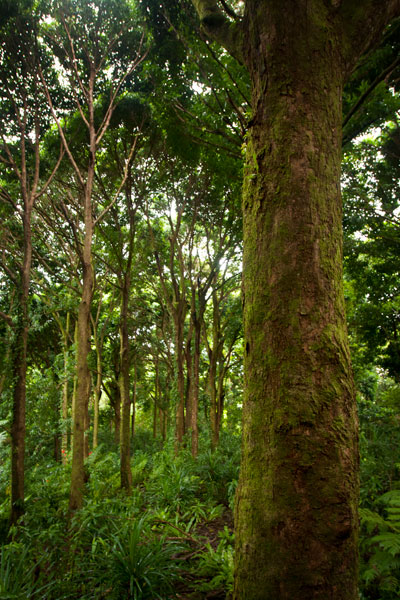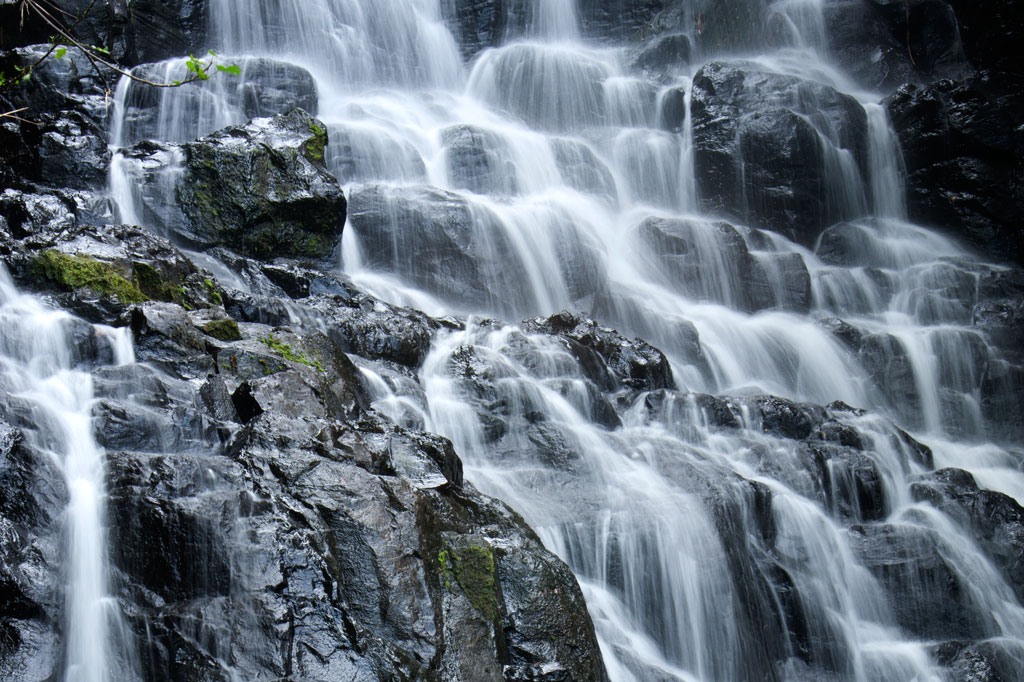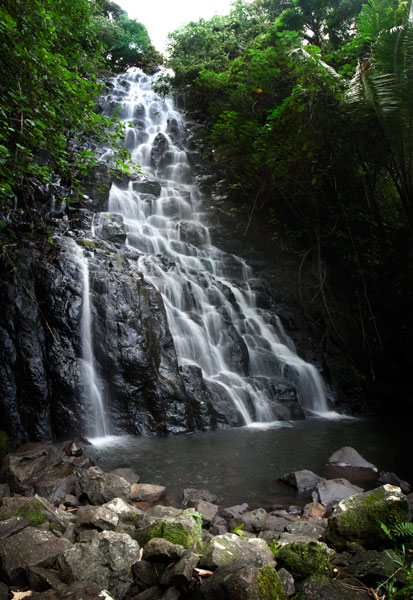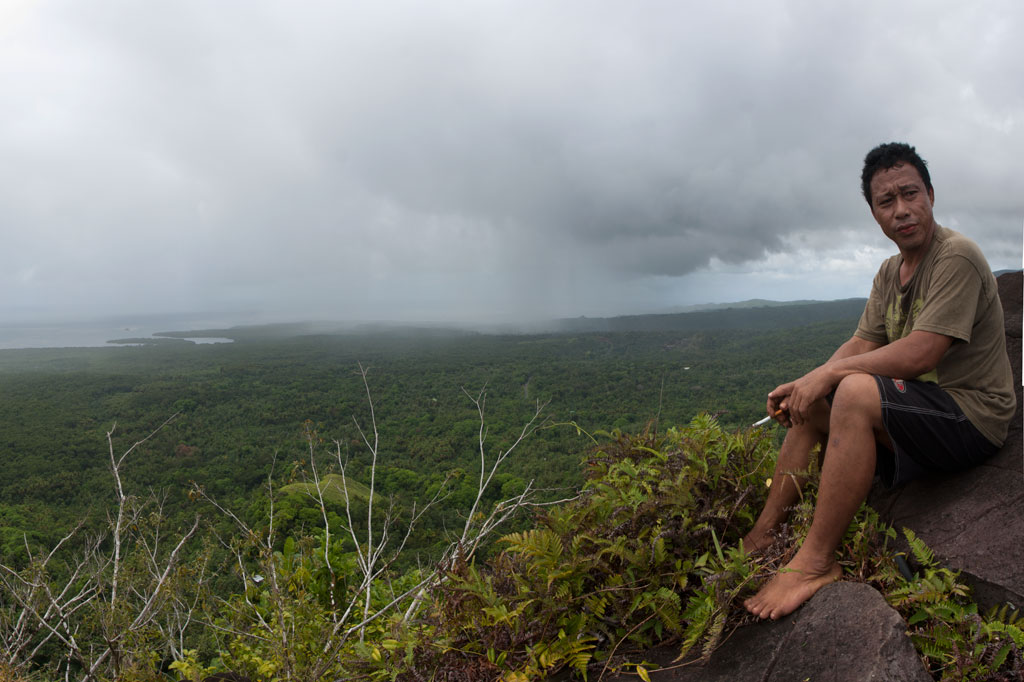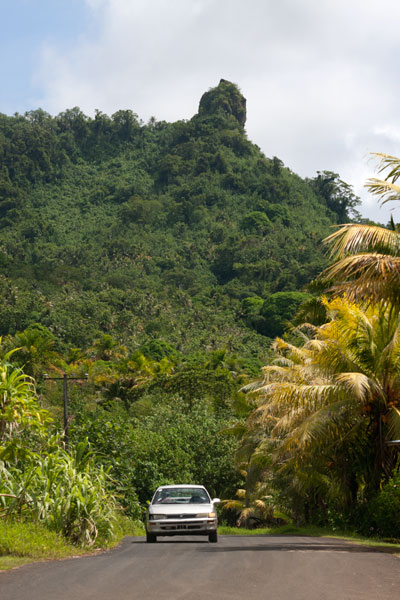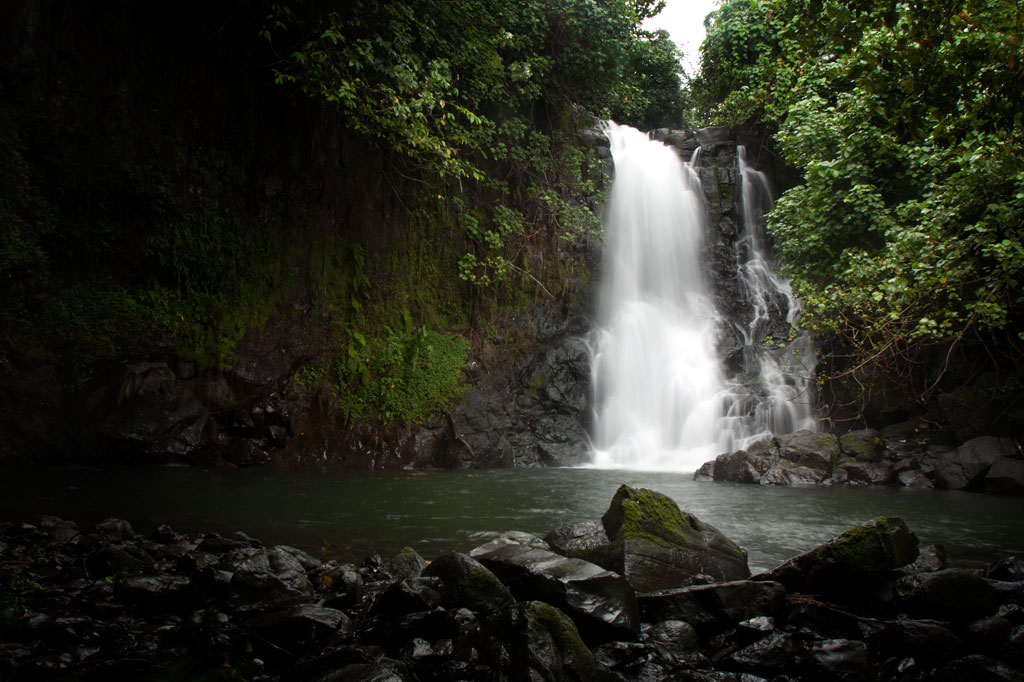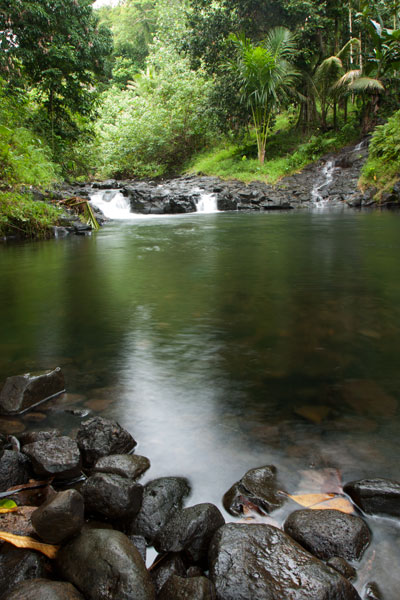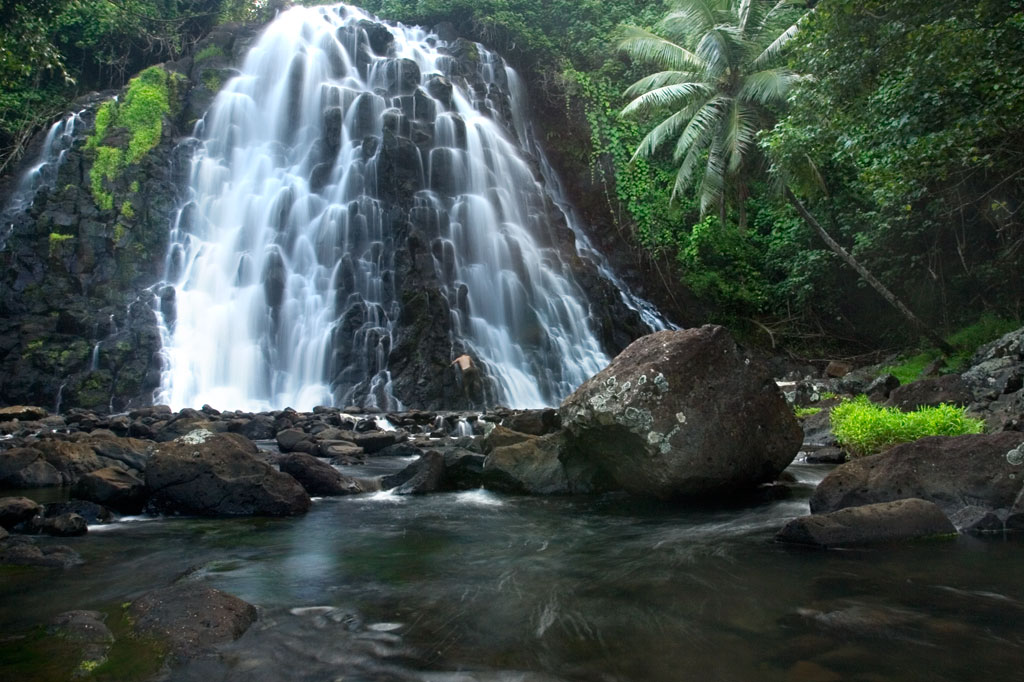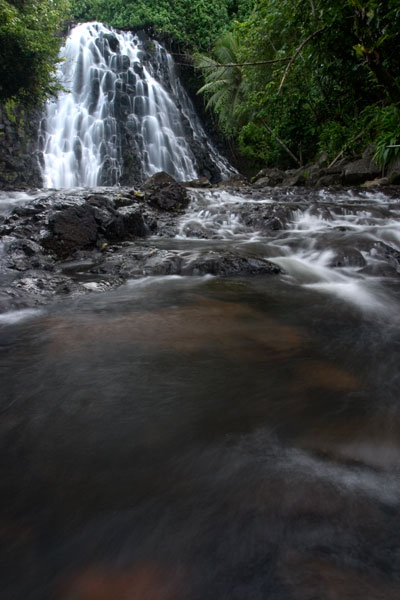Dolotomw is the highest peak in the region of Kitti once known as Onohnleng. Its prominence led Russian explore Fedor Lütke, in 1828, to incorrectly conclude that it was the highest point on the island. The Spanish called the peak Montesante (“saint mountain”). Pohnpeians originally called it Dolen Ne, but the name was later changed to Dolotomw (see legend below).
The challenging hike to the overgrown summit begins on the north side of an unpaved secondary road in Pahnais, west of the turn-off for Nipai Rock and climbs a total of 2.47 km (1.5 mi) to the peak, crossing an open savannah in the region of Lukeileng about half-way along. This spot, in itself, is worth visiting even if you don’t plan to continue up the mountain. There are great views and there’s plenty of space to pitch a tent, though no fresh water nearby.
At the beginning, the trail runs north for 0.3 km (0.18 mi) at a steady slope of 17% before reaching a group of residential buildings, where your guide will ask permission to proceed. The trail then angles northeast and steepens to about 20-22% for the 0.68 km to the upland meadow in Lukeileng. From the middle of the meadow to the base of the mountain is another 0.9 km (0.56 mi) with a more moderate slope of about 13%. Here, there’s a branch in the path. The eastern branch leads to a tiny cave. Stay on the northern track for the summit. At this point, the real climb begins and is quite steep and grubby much of the way (40-44%). The trail vanishes. Hikers must follow their guide more or less straight up the hillside, using natural hand and footholds — rocks, tree roots, etc. There’s a false summit about 130 m (142 yd) from the top, but trees and bushes obscure the views. The true summit is behind a knoll and is criss-crossed with WWII-era Japanese trenches.
- Plan for 8 hours for this hike.
- Please visit the Local Guides & Tour Operators page for a list of experienced guides available for hikes to Dolotomw. Offer $50.00 for a group of five or less.
The Story of Apology Peak
Long ago, a man named Manendolenne (“man of leg hill”) lived at the summit of what is now called Dolotomw. He had a little house there and felt secure, because he was isolated from other people who might wish to cause him harm. Now, there was a demon who lived on Penieu Island and it had a fishpond there stocked with butterfly fish. Manendolenne could see the sun glinting on the surface of the pond from the top of the mountain and became curious about it. One day, while the demon was away, he went down to Penieu and stole some fish from the pond, took them back to his home, and ate them. When the demon saw that someone had stolen his fish, he immediately suspected Manendolenne and went looking for him. Manendolenne heard that the demon was looking for him and prepared pounded taro balls with coconut cream as an offering of apology for what he’d done. When the demon arrived, Manendolenne offered the food to the demon. Ever after, the peak was known, not as Dolen Ne (“leg hill”) but as Dolotomw (“apology peak”).


